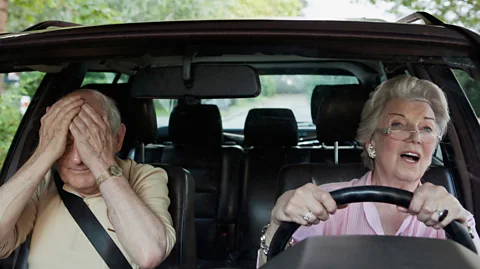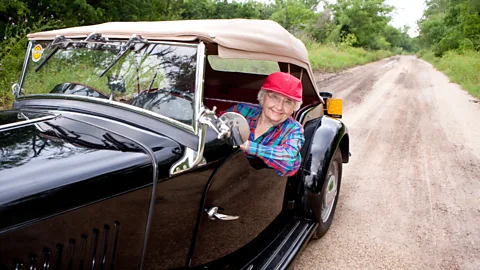Meet Australia’s new go-it-alone investors
 Alamy
AlamyIt’s not for the faint-hearted, going solo with your life savings. But in search of a more prosperous retirement, that’s exactly what two million Australians have decided to do. They’ve taken matters in to their own hands, ditching traditional professional investment services in favour of (either completely or partially) running their pension plans by themselves. They’re hoping to hit the jackpot: a comfortable retirement. To be sure, taking this kind of risk may offer big rewards but the downside can be devastating.
There’s some indication that what’s happening down under could be the start of a wider global trend for self-directed retirement savings. Government measures, known as “pension freedoms” came into force in Britain in April 2015 giving individual a lot more control over their retirement cash.
 Alamy
AlamyThe number of go-it-alone investors in Australia has been climbing over the last decade, according to Lisa Greig, from Taxpayers Australia, a nonprofit organisation representing tax accountants and small businesses. Official statistics show self-managed funds now account for almost a third of all superannuation, or pension, nest-eggs in Australia. A decade ago that figure stood at just 10%.
The reason? Australia’s ageing population and rising living costs are putting huge pressure on household budgets, (as people live longer lives they still need to accumulate enough savings to pay for food, utilities, insurance.) In addition, more Australians want a greater say in how their finances are managed. These self-funded retirees believe they can get better returns by spreading their money between assets such as property, debentures (debt products issued by large firms) vintage cars or even fine art, in addition to stocks. Large pension funds don’t offer investors this breadth of investments and often rely more heavily on equities performance to generate returns.
While the majority of Australians trust their retirement income to funds run by specific companies or industries (education and health care account for 19% of the superannuation market), or retail funds managed by financial institutions or the insurance sector (around 28% of all superannuation), doing it yourself is clearly not for everyone. Those taking the plunge must be financially literate and willing to do their research, Greig said.
“It comes down to the effort you want to put in,” she explained. “You’ve got to put the training in if you want to run a marathon, well, you’ve got to put the training in if you want to get the right result from your self-managed superannuation fund. The buck stops with you so you’ve got to take that responsibility.”
Tim Harcourt, an economist at the University of New South Wales Business School said, “The main pitfall is you have to do the administration yourself and be more vigilant in watching the markets — instead of sitting back and letting the professionals do it for you. It’s not necessarily more risky — self-managed super funds (SMSF) have been performing well compared to industry and retail funds but you have to be engaged and have a good grasp of financial information to be successful.”
Pensions deconstructed
Australia has various provisions for those approaching old age. Most people over the age of 65 are entitled to an age-pension, which is means-tested and they don’t have to contribute to. Designed as a measure to prevent poverty, about a quarter of retirees aren’t eligible to receive the benefit because they are too wealthy.
In 1990 Australia introduced a compulsory pre-funded pension plan called superannuation, a scheme that employers must pay in to on behalf of their workers. Those contributions currently equate to 9.5% of an employee’s wage, this will likely rise to near 12% by July 2025. The scheme was created by the government to provide the country’s ageing and longer-living population with a decent income in retirement. It’s a similar structure to schemes run in Chile and Sweden.
Compulsory superannuation, introduced more than 25 years ago, has thrown up new challenges for retirees. Never before have so many older Australians had the opportunity to shape their financial futures. Since the compulsory system came into effect the superannuation industry has amassed funds worth more than A$1tn (US$717.8bn), and laws allowing self-managed funds handed over power to Australians that previous generations never had.
In their own hands
These self-funded retirees say caution is key and a clear long-term strategy and an aversion to unnecessary risk are crucial. A sense of calm is needed, too. Arnie Bates, who migrated from Britain in 1985, said it has been important to learn not to panic.
“You must not be too nervous when things go the wrong way in the market,” Bates said. “Yeah, you win some, you lose some. On average we are ahead but at the moment to make more than the cost of living is very, very hard and it is pushing a lot of retirees into risky investments, unfortunately.”
Bates, in his late 60s, retired after a long career in the textile, footwear and clothing industry in 2011. It was a five-year stint working in Indonesia that convinced him that he had the knowledge and confidence to take control of his money in retirement. Bates said he holds at least two year’s worth of living expenses in cash to weather downturns in the stock market.
Not everyone is so fortunate or so savvy. For those who want to learn more about investing, the Australian Tax Office offers advice to retirees, while information services such as the Eureka Report and professional financial advisers offer guidance.
The risks
For many investors, the thought of handling their own finances may fill them with fear.
“The real risk is people taking control of their [superannuation] funds without any formal or appropriate advice, and thinking they know a little bit about everything, which is dangerous,” explained Jason Sourasis, managing director of Strategic Financial group, which encourages self-managed portfolios for Australians with funds only in excess of A$500,000 (US$360,000).
In Australia, many retirees who go solo with their finances hand-pick an advisor to help them navigate through a complex maze of regulations and rules, and tax legislation that can be hard for outsiders to follow.
“A lot of people probably take [on] too much risk at the wrong times not knowing anything about the investment markets or the volatility that comes with different asset classes,” Sourasis told BBC Capital.
Professor John Piggott from the University of New South Wales Business School worries that some self-funded retirees might find themselves out of their depth.
“It is not a responsibility that previous generations have faced. That contributes to its lack of familiarity amongst people of this age and its scariness. It leads to a lot of apprehension and, in some cases, very poor decision-making,” he said.
Successes and failures
Neville Daynes, a former school principal in Melbourne, says his portfolio, which comprises cash accounts, property and shares, incurs accounting and audit costs of less than 1%, well below the 2.5% charged by larger institutions.
Daynes says he is organised and stays on top of his paperwork. Like fellow retiree Arnie Bates, he takes a cautious approach and says he never holds more than 5% of his portfolio in any one share or investment.
“There were a couple of times when I got hit during the credit squeeze …,” said Daynes. “It takes quite a bit of work and you have to work on a strategy, so it is not for everybody.”
Though taking the driving seat is an increasing popular approach to retirement planning, there are horror stories.
A decade ago, Kerry Koliadis, an immigrant from Greece, retired after a 44-year career in the cardboard-box making industry. After seeing friends and colleagues lose money in the stock market, the 74-year old retiree from Sydney ploughed most of his retirement money into the local taxi industry, buying licences that allow him to run taxi services.
Koliadis said competition from ride sharing service Uber has had a catastrophic effect.
“I bought three taxi licences for approximately A$250,000 (US$179,000) each but now the price has dropped by more than A$100,000 (US$72,000) each,” he explained. “This is not the right thing for somebody in retirement to face, and I say my prayers, my friend.”
